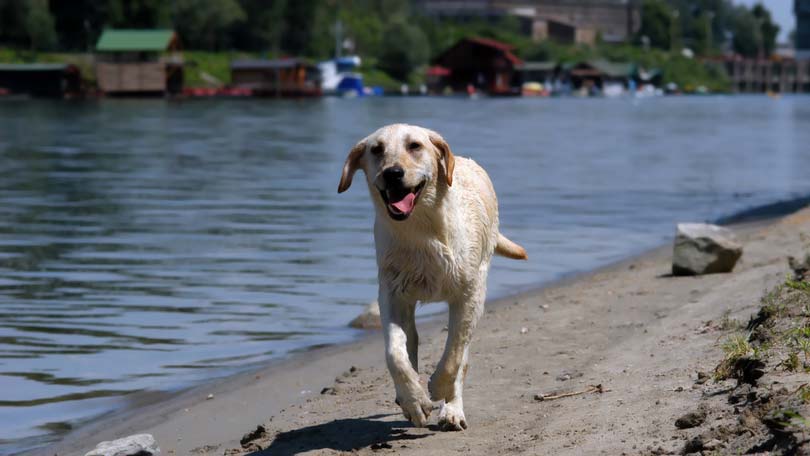
The most commonly asked question in my class is how do I get my dog to come to me when called? People complain that their dogs come only when it is convenient to them, and certainly not if there is another dog or a squirrel in the vicinity. Too often these people have used the “come” command in so many unsuccessful circumstances that it has lost meaning. In this case we need to start from scratch and build a dependable foundation.
First of all, you must establish yourself as leader of the pack in your relationship to your dog. You accomplish this by creating rituals around food and territory. When feeding your dog, you should always make sure it has to wait before you release it to eat. Also, make sure you are not giving out treats for free. Oftentimes people get in the habit of telling a dog it is good and giving it a bone when the dog has done nothing more than watch them come home. It is also good to eat something before feeding your dog, because an alpha in a pack always eats first. Make sure your dog waits before entering or exiting a new territory, until you take the first step, then release it. Make sure it learns the “leave it” command with toys and treats. Practice long down stays.
You may wonder what these directions have to do with creating a reliable recall, but establishing a firm foundation in training and doing your alpha work will make the recall more secure, because you dog will be looking to you for direction and leadership.
Now for the recall work. To begin with, you need to choose a command that you haven’t ruined, so if you already used “come” and your dog often didn’t come, then choose “here” or “now,” something short and easy, a one-syllable word. Start using this command when your dog is on a six-foot leash, pulling it towards you after you say the word, followed by praise and a treat. Do this on and off throughout the day, so that your dog learns the somatic relationship between the command and the pull on the leash.
More than anything, you need to make sure your dog associates coming to you with something good. Praise and treat your dog even if it comes to you without being called, if you are sitting on the couch or at a dog park, for example. If your dog is off leash and is being distracted by a squirrel, do not use the reliable recall word while still working on it, but use an unreliable recall, like its name. That way, if you aren’t successful, you won’t be back to square one.
Make sure you only call out your command once. Dogs learn quickly that they don’t have to listen to a command if it is repeated again and again. Also, make sure you are using good treats and a variety of treats and vary the amount, so that your dog doesn’t know when it will hit the jackpot. It’s like gambling; your dog will keep coming back in hope of hitting that big steak payoff again. Eventually you’ll be using treats randomly, but while in training use treats consistently, to program the positive association.
Begin using a long-line when outside, calling the dog to you and reeling it in if it doesn’t respond. Use the command indoors several times a day off leash, when you know it will come. Make sure you consistently praise the dog when it comes to you. Use the long line outside when your dog is distracted by a squirrel. Control distraction by having a person feed your dog while you call it to you, so that it learns to make the choice to come to you instead of staying where the distraction is. Make sure your treats are better. If the dog fails, leash it and practice the recall three times on leash. Keep up treating it intermittently and praising it to make sure the recall remains consistent, and don’t only use the recall command when it’s time to go home and the fun is over. Make it a command you work on even after you feel you have it down.
If you follow these directions and slowly increase distraction, you will have a dog that comes to you reliably, and it’s a great moment when your dog chooses to come to you instead of chasing squirrels.
About the Author
Kika Dorsey has been working with animals since a child. She has trained dogs for adoption at the Sierra Vista Animal Shelter in Boulder and has worked with dogs of all sizes and with all kinds of behavior problems. She is a member of the Association of Pet Dog Trainers and the International Association of Canine Professionals. She is certified by the IACP’s president Rocky Boatman. A Ph.D. in Literature and having worked as a horse wrangler for two years , Kika brings her wide range of skills into her work-analysis, writing, and experience with a wide array of animals and behavior problems of different species. Kika lives in Boulder with her husband, children, and dog Dexter.
Kika Dorsey, Ph.D.
701 University Ave.
Boulder,CO 80302
(303)442-3353
